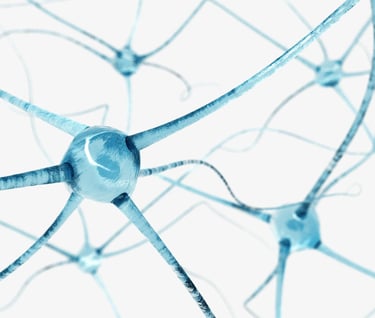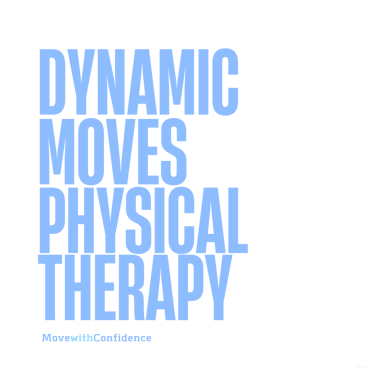Can Physical Therapy Alleviate the Pain of a Pinched Nerve?
Learn how physical therapy can help with the pain and discomfort associated with a pinched nerve. Discover the different types of therapy available, and what to expect from your sessions.


Introduction
A pinched nerve can be an incredibly painful and uncomfortable experience. The pinching of a nerve occurs when surrounding tissues, such as bones, muscles, or tendons, place pressure on a nerve. This pressure can lead to a range of symptoms, including pain, tingling, numbness, and weakness.
If you're suffering from a pinched nerve, you may be wondering what you can do to alleviate the pain and discomfort. One option you may want to consider is physical therapy. Physical therapy can be an effective treatment for pinched nerves, helping to reduce pain and improve mobility.
In this article, we'll explore how physical therapy can help with a pinched nerve, what types of therapy are available, and what to expect from your sessions.
How Can Physical Therapy Help a Pinched Nerve?
Physical therapy can help with a pinched nerve in several ways, including:
1. Improving Range of Motion
A pinched nerve can cause stiffness and limited range of motion. Physical therapy can help improve your range of motion by using targeted exercises to stretch and strengthen the muscles surrounding the affected nerve. By improving your flexibility and mobility, you may be able to alleviate some of the pressure on the nerve, reducing pain and discomfort.
2. Reducing Inflammation
Inflammation is a common side effect of a pinched nerve. Physical therapy can help reduce inflammation through the use of manual therapy techniques such as massage, myofascial release, and trigger point therapy. These techniques can help increase blood flow to the affected area, promoting healing and reducing inflammation.
3. Addressing Underlying Causes
Physical therapists can help identify and address any underlying causes of your pinched nerve. For example, poor posture, repetitive motions, or a sedentary lifestyle can all contribute to the development of a pinched nerve. By addressing these underlying causes, physical therapy can help reduce the risk of further pinched nerves in the future.
4. Improving Strength and Function
A pinched nerve can weaken the muscles surrounding it, leading to decreased strength and function. Physical therapy can help improve strength and function by using targeted exercises to build muscle and improve coordination. By strengthening the muscles surrounding the affected nerve, you may be able to reduce the pressure on the nerve, improving mobility and reducing pain.
What Types of Physical Therapy are Available?
There are several types of physical therapy that can be used to treat a pinched nerve, including:
1. Manual Therapy
Manual therapy techniques such as massage, myofascial release, and trigger point therapy can be effective in reducing inflammation and promoting healing. These techniques involve hands-on manipulation of the affected area to increase blood flow and reduce pain.
2. Therapeutic Exercise
Therapeutic exercise involves targeted exercises designed to stretch and strengthen the muscles surrounding the affected nerve. These exercises can help improve flexibility, mobility, and strength, reducing pain and discomfort.
3. Ultrasound Therapy
Ultrasound therapy uses high-frequency sound waves to penetrate deep into the affected tissue, promoting healing and reducing inflammation. This type of therapy is often used in conjunction with other physical therapy techniques to improve overall effectiveness.
4. Electrical Stimulation
Electrical stimulation involves the use of electrical currents to stimulate the affected nerves and muscles. This can help reduce pain and improve function by increasing blood flow and promoting healing.
What Can You Expect from Physical Therapy?
If you're considering physical therapy for a pinched nerve, you may be wondering what to expect from your sessions. Here are a few things you can expect:
1. Evaluation
Your physical therapist will begin by evaluating your condition to determine the severity of your pinched nerve and the best course of treatment. This may involve a physical examination, medical history review, and diagnostic testing such as X-rays or MRI.
2. Personalized Treatment Plan
Based on your evaluation, your physical therapist will develop a personalized treatment plan that addresses your unique needs and goals. This may include a combination of manual therapy, therapeutic exercise, ultrasound therapy, and electrical stimulation.
3. One-on-One Sessions
During your physical therapy sessions, you'll work one-on-one with your therapist to perform targeted exercises and receive hands-on treatment. Your therapist will guide you through each exercise and provide feedback to help you improve your technique.
4. Home Exercise Program
In addition to your one-on-one sessions, your physical therapist may also provide you with a home exercise program to help you continue your treatment at home. This program will be tailored to your specific needs and may include stretching, strengthening, and mobility exercises.
5. Regular Progress Evaluations
Throughout your treatment, your physical therapist will regularly evaluate your progress to ensure that you're making progress toward your goals. Your treatment plan may be adjusted as needed to ensure that you're receiving the most effective treatment possible.
FAQs:
Q) How long does physical therapy take to work for a pinched nerve?
The length of time it takes for physical therapy to work for a pinched nerve varies depending on the severity of the pinched nerve, the underlying cause, and the individual's response to treatment. However, many people experience relief from their symptoms within a few weeks of starting physical therapy.
Q) Is physical therapy painful for a pinched nerve?
Physical therapy should not be painful for a pinched nerve. Your therapist will work with you to ensure that you're comfortable throughout your sessions, and will adjust your treatment plan as needed to avoid aggravating your symptoms.
Q) How often should I attend physical therapy for a pinched nerve?
The frequency of your physical therapy sessions will depend on the severity of your pinched nerve and your response to treatment. In general, most people attend physical therapy sessions one to three times per week.
Q) Can physical therapy prevent future pinched nerves?
Yes, physical therapy can help prevent future pinched nerves by addressing underlying causes such as poor posture or repetitive motions. Your physical therapist can provide you with exercises and strategies to help you reduce your risk of developing another pinched nerve in the future.
Conclusion
If you're suffering from a pinched nerve, physical therapy can be an effective treatment option to alleviate pain and improve mobility. With a personalized treatment plan that includes manual therapy, therapeutic exercise, and other techniques, you may be able to reduce inflammation, address underlying causes, and improve strength and function. Talk to your healthcare provider or a physical therapist to determine if physical therapy is right for you.
